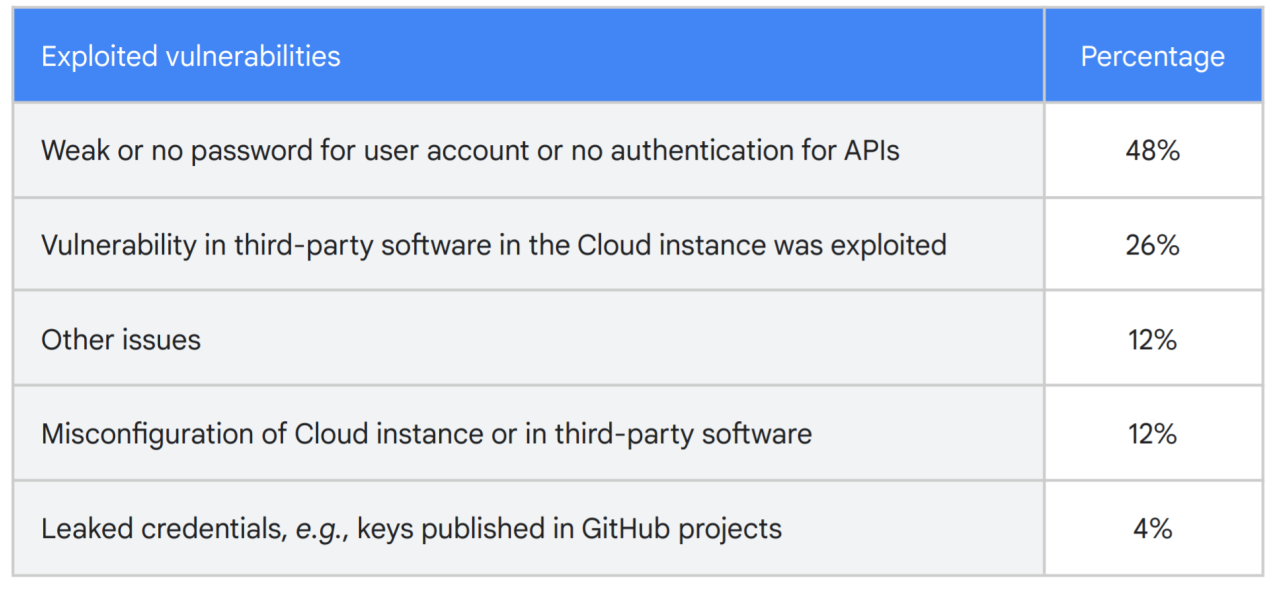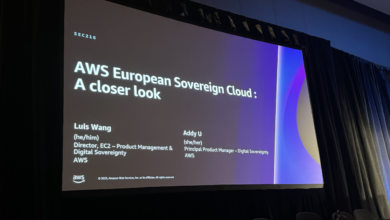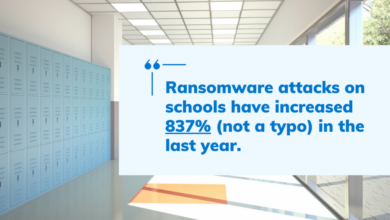
Data Exfiltration on GCP Without a Trace
Data exfiltration taking place on google cloud platform without trace – Data exfiltration taking place on Google Cloud Platform without a trace is a chilling reality. Imagine the silent theft of your most sensitive data, happening right under your nose without a single alarm bell ringing. This isn’t science fiction; it’s a sophisticated attack vector increasingly used by malicious actors to steal intellectual property, customer data, and financial information. This post delves into the shadowy world of undetectable data breaches on GCP, exploring the methods used, the challenges of detection, and crucially, how to protect yourself.
We’ll uncover the sneaky techniques attackers employ, from exploiting misconfigured services to leveraging legitimate APIs for malicious purposes. We’ll also examine the advanced evasion tactics used to bypass GCP’s security monitoring, including the use of serverless functions and insider access. Think of it as a digital heist, meticulously planned and flawlessly executed – unless you know what to look for.
Get ready to learn how to spot the signs and build a robust defense against this silent threat.
Understanding Data Exfiltration on Google Cloud Platform
Data exfiltration from Google Cloud Platform (GCP) represents a significant threat, particularly when conducted silently and without leaving a traceable audit trail. Attackers are increasingly sophisticated, leveraging GCP’s inherent features and functionalities to mask their malicious activities, making detection a complex and challenging endeavor. This necessitates a deep understanding of the techniques used and the obstacles faced in identifying these stealthy attacks.Common Methods of Silent Data Exfiltration from GCPData exfiltration from GCP can occur through various methods designed to avoid detection.
These methods often involve exploiting misconfigurations, vulnerabilities in applications, or leveraging legitimate GCP services in nefarious ways. The goal is always to move data out of the GCP environment without triggering alarms or leaving obvious traces.
Challenges in Detecting Silent Data Exfiltration from GCP
Detecting silent data exfiltration presents numerous challenges. The sheer volume of data flowing within a typical GCP environment makes it difficult to pinpoint malicious activity amidst legitimate traffic. Attackers often use techniques to blend in with normal operations, making it hard to distinguish between benign and malicious data transfers. Furthermore, the distributed nature of cloud environments complicates the task of correlating events across different services and regions.
The lack of readily available, centralized logging and monitoring across all GCP services further exacerbates the challenge.
Attacker Leverage of GCP Features to Mask Activities
Attackers cleverly exploit GCP’s features to mask their activities. For instance, they might utilize managed services like Cloud Storage, Cloud Functions, or Cloud Run to transfer data without directly interacting with the underlying infrastructure. The use of serverless functions, in particular, provides a layer of abstraction that can obscure the origin and destination of data transfers. They can also leverage VPC peering or interconnected networks to move data between different projects or accounts without raising immediate suspicion.
The use of well-established APIs further adds to the complexity of detection.
Obfuscation Techniques Used to Hide Exfiltration Attempts
Obfuscation plays a crucial role in silent data exfiltration. Attackers employ various techniques to disguise malicious traffic. One common method is to encrypt data before transmission, making it difficult to analyze the content without decryption keys. Another technique involves using custom protocols or encoding schemes to make the data appear like legitimate network traffic. Data can be fragmented and sent across multiple channels, making it challenging to reconstruct the complete exfiltrated data.
Finally, attackers can utilize legitimate tools and services, such as scheduled tasks or cron jobs, to execute data exfiltration operations at regular intervals, blending their actions into routine system processes. For example, an attacker might embed malicious code within a seemingly innocuous script that runs daily, slowly transferring data over an extended period.
Exploiting GCP Services for Stealthy Exfiltration

Data exfiltration from Google Cloud Platform (GCP) isn’t always a noisy affair. Sophisticated attackers leverage the very services designed for legitimate data management to quietly siphon information, often leaving little to no trace. This involves understanding GCP’s architecture and exploiting misconfigurations or inherent vulnerabilities within its services. This post will delve into common attack vectors, focusing on how attackers exploit these vulnerabilities for silent data exfiltration.
The success of these attacks often hinges on exploiting misconfigurations or vulnerabilities within GCP services. Attackers leverage legitimate APIs and tools, masking their malicious activity within the normal flow of data traffic. This makes detection incredibly challenging, demanding a robust security posture and continuous monitoring.
Vulnerable GCP Services and Misconfigurations
Several GCP services are frequently targeted due to their potential for data exfiltration. Cloud Storage, for example, allows for public access to buckets, and if misconfigured, can easily expose sensitive data. Similarly, improperly secured Cloud SQL instances can be compromised, enabling attackers to download database contents. Even Cloud Functions, intended for serverless computing, can be abused if insufficiently secured, potentially acting as a conduit for exfiltrated data.
Misconfigurations such as overly permissive IAM roles, lack of encryption at rest and in transit, and inadequate logging and monitoring significantly increase the risk of successful data exfiltration.
Legitimate GCP APIs for Malicious Data Transfer
Attackers can utilize legitimate GCP APIs to blend their malicious activity with legitimate traffic. For instance, the Cloud Storage API can be used to programmatically download data to a remote server controlled by the attacker. Similarly, the Compute Engine API can be leveraged to create virtual machines (VMs) and then use those VMs to exfiltrate data. The key here is the attacker’s ability to use these APIs without triggering alerts.
This is achieved through techniques such as using low-bandwidth transfers spread over time, employing obfuscation techniques, and targeting infrequently monitored services.
Hypothetical Cloud Storage Exfiltration Scenario
Let’s imagine an attacker gains access to a GCP project with insufficiently secured Cloud Storage buckets. The following table Artikels the steps involved in a stealthy exfiltration:
| Step | Action | Outcome |
|---|---|---|
| 1 | The attacker identifies a Cloud Storage bucket with publicly accessible data or weak access controls (e.g., improperly configured IAM roles granting excessive permissions). | The attacker gains unauthorized access to the bucket’s contents. |
| 2 | The attacker uses the gsutil command-line tool (or a similar tool/API call) to download the sensitive data from the bucket to a remote server under their control. This could be done incrementally to avoid detection. | The sensitive data is copied to the attacker’s server. |
| 3 | The attacker deletes the downloaded files from the remote server to cover their tracks, leaving minimal evidence of the exfiltration. | The attacker’s server now holds the stolen data, and the GCP bucket shows no immediate signs of compromise. |
| 4 | (Optional) The attacker might further obfuscate their activity by using tools that encrypt the data before transferring it, or by using a VPN to mask their IP address. | The attacker reduces the chances of detection by standard security tools. |
Evasion Techniques and Countermeasures: Data Exfiltration Taking Place On Google Cloud Platform Without Trace
Data exfiltration from Google Cloud Platform (GCP) requires sophisticated techniques to bypass the robust security measures in place. Attackers employ various methods to remain undetected, often combining multiple approaches for maximum effectiveness. Understanding these evasion techniques is crucial for implementing effective countermeasures and protecting sensitive data.
Advanced Evasion Techniques for Bypassing GCP Security Monitoring
Advanced persistent threats (APTs) and sophisticated attackers often leverage techniques beyond simple credential theft. They might utilize techniques like exploiting vulnerabilities in GCP services themselves, or manipulating logging and monitoring data to mask their activities. For example, an attacker might use a compromised service account to initiate actions, then modify the audit logs to remove or obfuscate evidence of their actions.
Another tactic involves leveraging legitimate GCP features in unexpected ways, such as using Cloud Functions to transfer data in small, seemingly innocuous chunks over extended periods, making detection difficult. The attacker might also utilize techniques to alter or delete security alerts generated by GCP’s security tools, hindering timely detection and response.
Utilizing Serverless Functions for Covert Data Exfiltration
Serverless functions, like Google Cloud Functions, offer an attractive avenue for covert data exfiltration due to their ephemeral nature and automated scaling. An attacker could deploy a function triggered by a specific event, such as a scheduled timer or a message on a pub/sub topic. This function would then discreetly retrieve sensitive data and transmit it to an external server, potentially using techniques like steganography or encryption to further obfuscate the data transfer.
The function’s short-lived nature and automated scaling can make it difficult to track and identify as malicious. The attacker might also utilize multiple functions, distributed across different regions to further distribute the attack footprint and hinder detection. For example, one function could collect data, another could encrypt it, and a third could transmit it, making the attack more resilient to disruption.
Leveraging Insider Access or Compromised Credentials
Insider threats and compromised credentials represent a significant vulnerability in any cloud environment. An attacker with legitimate access, even with limited privileges, can potentially exfiltrate data through seemingly innocuous actions. For instance, an employee with access to a database could subtly modify export settings or create a custom script to transfer data to a personal account. Compromised credentials, often obtained through phishing or other social engineering attacks, allow direct access to sensitive data and resources, making exfiltration relatively straightforward.
This emphasizes the importance of robust access control policies, regular security audits, and strong password management practices. Multi-factor authentication (MFA) is crucial in mitigating this risk.
Comparison of GCP Data Loss Prevention (DLP) Tools
GCP offers a suite of DLP tools, each with its strengths and weaknesses. Cloud DLP API provides a comprehensive set of capabilities for detecting sensitive data in various data stores and cloud services. Data Loss Prevention (DLP) in Cloud Storage allows for the detection and prevention of sensitive data being stored or transferred via Cloud Storage. These tools can be configured to identify and block sensitive data based on predefined rules or custom patterns.
However, the effectiveness of these tools depends heavily on proper configuration and regular updates. Sophisticated attackers may attempt to circumvent these controls by using techniques like data obfuscation or encoding, highlighting the need for continuous monitoring and adaptation of DLP policies. A comparison might consider factors like ease of implementation, scalability, and the granularity of detection offered by each tool.
The choice of DLP tool depends on specific organizational needs and risk tolerance.
Forensic Analysis of Silent Exfiltration Attempts

Uncovering silent data exfiltration on Google Cloud Platform (GCP) requires a methodical approach, leveraging GCP’s robust logging and monitoring capabilities. Successful investigation hinges on understanding attacker tactics, recognizing subtle indicators, and effectively utilizing available forensic tools. This process is crucial for identifying the breach, containing the damage, and improving future security posture.
The silent creep of data exfiltration on Google Cloud Platform is a chilling reality; it’s incredibly difficult to detect these stealthy breaches. Understanding how to combat this requires a robust security strategy, and that’s where solutions like those discussed in this article on bitglass and the rise of cloud security posture management become crucial. Ultimately, proactive measures are vital to prevent data loss from GCP, before it even begins.
A systematic investigation into suspected data exfiltration on GCP begins with a clear understanding of the environment and the potential attack vectors. This involves reviewing existing security configurations, identifying critical data assets, and understanding normal operational baselines. From there, a structured approach can be implemented.
Step-by-Step Procedure for Investigating Suspected Data Exfiltration
This procedure Artikels the key steps involved in a GCP data exfiltration investigation. It combines log analysis, network monitoring, and security information and event management (SIEM) correlation to provide a comprehensive view of the incident.
- Identify and Prioritize Alerts: Begin by reviewing security alerts from GCP’s Cloud Security Command Center and any integrated SIEM systems. Prioritize alerts based on severity and potential impact, focusing on those related to unusual data access, network activity, or API calls.
- Gather GCP Logs: Collect relevant logs from various GCP services, including Cloud Audit Logs, Cloud Storage logs, Virtual Machine logs, and network logs (Cloud VPC Flow Logs, Cloud Interconnect logs). The specific logs required will depend on the suspected exfiltration method and target data.
- Analyze Network Traffic: Examine network traffic patterns using Cloud Network Monitoring or a dedicated network monitoring tool. Look for unusual outbound traffic volumes, connections to suspicious IP addresses or domains, or use of unusual ports. This step is critical for detecting covert data transfers.
- Correlate Events: Integrate data from different log sources and network monitoring tools to identify correlations between suspicious events. For example, unusual API calls to Cloud Storage followed by significant outbound network traffic might indicate data exfiltration.
- Investigate User and Service Accounts: Review activity logs for all user and service accounts with access to the affected data. Look for unusual login attempts, elevated privileges, or access from unusual locations.
- Analyze Data Transfer Methods: Determine how the data was exfiltrated. Common methods include using compromised service accounts, exploiting vulnerabilities in applications, or using covert channels within network traffic.
- Reconstruct the Attack Timeline: Based on the collected data, reconstruct the timeline of the attack, identifying key events and the attacker’s actions.
Analyzing GCP Logs to Identify Suspicious Activity
GCP’s logging services provide a wealth of information that can be used to identify suspicious activity related to data exfiltration. Effective log analysis requires understanding the structure and content of different log types and using appropriate query tools such as Google Cloud’s Log Explorer.
For instance, analyzing Cloud Audit Logs for actions such as “google.cloud.storage.objects.create” or “google.cloud.compute.instances.create” can reveal unauthorized creation of storage buckets or virtual machines potentially used for exfiltration. Similarly, examining VPC Flow Logs for unusual outbound traffic patterns to external IP addresses or domains can highlight suspicious activity. Filtering logs by time range, resource, and user/service account is crucial for narrowing down the investigation.
The silent theft of data from Google Cloud Platform is a chilling reality; attackers can often move undetected. Building robust security requires careful planning and the right tools, and that’s where understanding the future of app development comes in. Check out this article on domino app dev the low code and pro code future to see how streamlined development can help improve security practices.
Ultimately, preventing untraceable data exfiltration hinges on proactive security measures and modern development methodologies.
Digital Footprint of an Attacker, Data exfiltration taking place on google cloud platform without trace
Attackers, even those attempting silent exfiltration, often leave behind a digital footprint. Identifying these indicators is key to successful forensic analysis.
The following indicators can help identify a data exfiltration attempt:
- Unusual network traffic patterns (e.g., high volume of outbound traffic to unusual destinations, use of uncommon ports).
- Creation of new or unusual cloud resources (e.g., storage buckets, virtual machines, or network configurations).
- Suspicious API calls (e.g., unauthorized access to sensitive data or modification of security settings).
- Modification of system configurations (e.g., changes to firewall rules, network routing, or access control lists).
- Unusual user or service account activity (e.g., logins from unfamiliar locations, access to sensitive data outside of normal working hours).
- Presence of malware or malicious code (e.g., through analysis of VM images or logs).
- Data loss from monitored systems or unexpected changes in data volume.
- Unexpectedly high resource consumption (e.g., CPU, memory, network bandwidth).
Using Network Monitoring Tools to Detect Covert Data Transfer
Network monitoring tools play a crucial role in detecting covert data transfer. These tools allow for real-time analysis of network traffic, enabling the identification of suspicious patterns that might otherwise go unnoticed. Tools such as tcpdump (or its cloud-based equivalents), Wireshark, and dedicated network monitoring solutions within GCP can capture and analyze network packets. By analyzing packet payloads and examining metadata such as source and destination IP addresses, ports, and protocols, investigators can uncover hidden data exfiltration channels.
Analyzing traffic for unusual compression techniques or encryption protocols can also be indicative of malicious activity.
Securing GCP Environments Against Silent Data Exfiltration

Data exfiltration from Google Cloud Platform (GCP) environments can be incredibly subtle, often leaving no obvious trace. This necessitates a proactive and multi-layered security approach focusing on prevention, detection, and response. Building a robust security posture requires careful planning and implementation of various security controls, emphasizing a strong foundation of access management and continuous monitoring.
Access Control and Least Privilege
Implementing the principle of least privilege is paramount. This means granting users and services only the minimum necessary permissions to perform their tasks. Over-permissioned accounts are a significant vulnerability, allowing malicious actors to easily escalate privileges and exfiltrate data unnoticed. Regularly review and audit IAM roles and permissions, removing any unnecessary access rights. Utilize granular access control mechanisms offered by GCP, such as service accounts with limited scopes and custom roles, to further restrict access to sensitive data and resources.
This reduces the potential impact of compromised credentials. For instance, instead of granting a developer full access to a project, only grant them access to specific storage buckets or compute instances relevant to their work.
Security Information and Event Management (SIEM) for Detection
A robust SIEM system is crucial for detecting anomalous activity indicative of data exfiltration. By centralizing and correlating logs from various GCP services, a SIEM can identify suspicious patterns, such as unusual data transfers, excessive API calls, or login attempts from unexpected locations. Properly configured alerts based on predefined thresholds can immediately notify security teams of potential threats.
For example, a sudden spike in data egress from a specific virtual machine or an unusual amount of data transferred to an external IP address should trigger an alert. The SIEM should also be capable of integrating with other security tools, such as intrusion detection systems (IDS), to provide a holistic view of the security posture. Real-time analysis and threat intelligence integration within the SIEM are essential for effective detection and response.
Checklist of Best Practices for Securing GCP Resources
A comprehensive security strategy requires a proactive approach. The following checklist highlights essential best practices:
- Enable Cloud Audit Logging: Actively monitor all API calls and activity within your GCP environment.
- Implement strong password policies and multi-factor authentication (MFA): Prevent unauthorized access to accounts.
- Regularly scan for vulnerabilities: Use tools like Google Cloud Security Health Analytics to identify and remediate security weaknesses.
- Utilize Virtual Private Cloud (VPC) Service Controls: Restrict network access to and from your GCP resources.
- Monitor network traffic: Detect unusual patterns or large data transfers to external destinations.
- Encrypt data at rest and in transit: Protect sensitive data from unauthorized access.
- Regularly review and update security policies: Adapt to evolving threats and vulnerabilities.
- Employ data loss prevention (DLP) tools: Prevent sensitive data from leaving the organization’s control.
- Implement intrusion detection and prevention systems (IDS/IPS): Monitor network traffic for malicious activity.
- Conduct regular security assessments and penetration testing: Identify vulnerabilities before attackers do.
Robust Security Architecture for GCP
A robust security architecture should be designed with a layered approach, combining preventive, detective, and responsive controls. This includes implementing strong network segmentation using VPCs and firewall rules, enforcing least privilege access control, utilizing data loss prevention (DLP) tools, and continuously monitoring for suspicious activities through a comprehensive SIEM system. Regular security audits, penetration testing, and employee security awareness training are also crucial components of a strong security posture.
A well-defined incident response plan is essential for effectively handling security breaches and minimizing the impact of data exfiltration attempts. The architecture should also be designed to incorporate automated responses to detected threats, such as automatically blocking suspicious IP addresses or disabling compromised accounts. This proactive approach minimizes the window of opportunity for attackers and enhances the overall security of the GCP environment.
Outcome Summary
The silent theft of data from Google Cloud Platform is a serious and growing threat. While the methods used are constantly evolving, understanding the techniques employed and implementing robust security measures are crucial for safeguarding your sensitive information. By understanding the attacker’s mindset and employing a multi-layered security approach, including proactive monitoring, strong access controls, and regular security audits, you can significantly reduce your risk of falling victim to this insidious form of data exfiltration.
Remember, vigilance and proactive security are your best defenses in this ever-evolving digital landscape.
FAQ Guide
What are the most common indicators of data exfiltration on GCP?
Unusual network traffic patterns, spikes in API calls to specific services, modifications to Cloud Storage permissions, and unexplained increases in data egress are key indicators.
How can I improve my GCP logging and monitoring to detect exfiltration attempts?
Implement robust logging across all GCP services, utilize Cloud Logging and Cloud Monitoring for real-time alerts, and set up custom dashboards to visualize key metrics. Regularly review logs for anomalies.
What role does employee training play in preventing data exfiltration?
Educating employees about security best practices, phishing awareness, and the importance of strong password hygiene is paramount. Regular security awareness training can significantly reduce the risk of insider threats.
Are there free tools available to help detect data exfiltration on GCP?
While many tools are commercial, GCP offers free tiers for its monitoring and logging services which, when properly configured, can provide valuable insights. Open-source security tools can also supplement these services.





